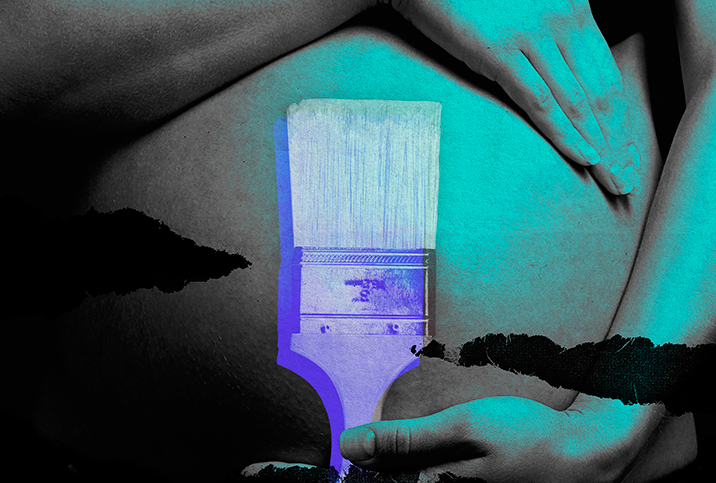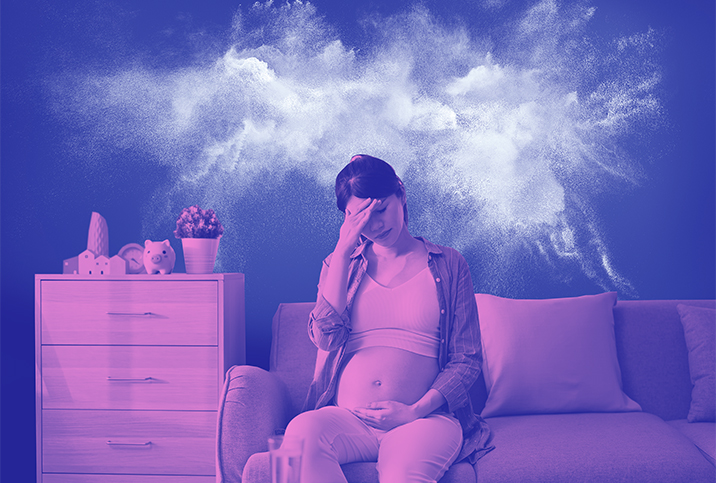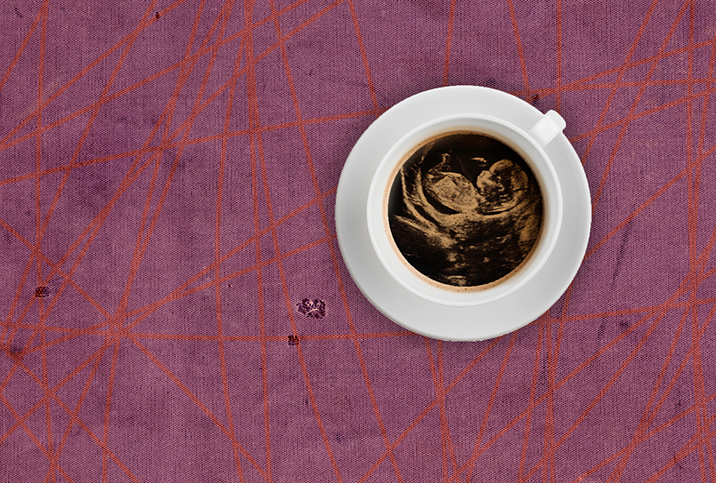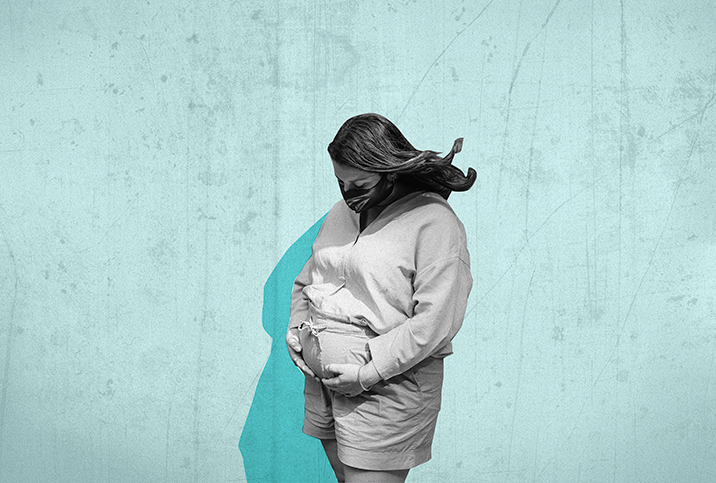Lead and Pregnancy: Should You Be Worried?

Lead exposure can come from a number of sources, and for expectant mothers or families looking to get pregnant, the risks of lead exposure can be great.
What is lead exposure and why should we worry? Lead is a heavy metal that's been used in many forms since prehistoric times. Historically, it's been used in construction, weapon making, plumbing, radiation shielding and more because of its low melting point and malleability.
More than just a metal, however, lead is a neurotoxin that builds up in bones and tissues, affecting several bodily functions, such as:
- Damaging the nervous system
- Causing neurological disorders and possible brain damage
- Interfering with biological enzymes
- Impacting the cardiovascular system
- Causing general negative effects on physical health
Given these damaging effects from lead exposure, it's especially crucial for pregnant people to steer clear.
The dangers of lead for pregnant women and their babies
If you've had high levels of lead in your blood in the past or been exposed to lead for a long period of time, you should talk to your doctor before getting pregnant or as soon as you know you're pregnant. Lead can leach from your bones into your blood, harming the baby.
Lead levels have been found in fetuses as early as the first trimester, according to the American College of Obstetricians and Gynecologists (ACOG).
"Lead exposure during pregnancy increases risk for miscarriage. It can cause a baby to be born too early or too small; harm a baby's brain, kidneys and nervous system; and result in learning or behavior problems in children," said representatives from the Centers for Disease Control and Prevention's Lead Poisoning Prevention Program within the National Center on Environmental Health in a statement to Giddy.
Lead poisoning in adults can cause trouble sleeping, fatigue, headaches, stomach pain, muscle pain, irritability and even loss of sex drive, according to Lora Shahine, M.D., a reproductive endocrinologist at Pacific NW Fertility in Seattle and host of the "Baby or Bust" podcast.
Breastfeeding and lead poisoning
Any lead stored in your bones or teeth can pass through your breast milk to your baby. Regular blood tests and doctor's appointments can help provide guidance on how to safely breastfeed.
The CDC states breastfeeding is safe if the mother's blood lead levels are less than 5 micrograms per deciliter (μg/dL). Regular testing should occur if the mother's blood lead levels are between 5 μg/dL and 39 μg/dL, and anyone with more than 40 μg/dL should pump and dump until lead levels decrease.
Lead can be found in certain formulas, so breastfeeding may be the safer option in many situations, according to the American Academy of Pediatrics Committee on Environmental Health.
Unexpected sources of lead
Most people are aware of lead in paints used in homes built before 1978. If your home was built before then and you haven't had it checked, now would be a good time to do so.
"When old paint cracks and peels, it creates lead dust and lead chips," said Lynn Sutfin, a public information officer for the Michigan Department of Health & Human Services. "The dust is so small you cannot see it. You can breathe in lead dust and not even know it."
Sutfin recommended that pregnant or breastfeeding women leave the house if someone is removing lead paint, cleaning up after removing lead paint or remodeling a room that may have contained lead paint.
Beyond paint, however, lead can be found in many unexpected sources.
Fast fashion
Recent reports of lead found in fast fashion items revealed an insidious source of lead exposure for pregnant and breastfeeding women. An investigation by Canada's CBC Marketplace looked at samples from adult, children's and maternity clothing, and found 1 in 5 items had elevated levels of harmful chemicals, including lead. One children's jacket contained 20 times the amount of lead considered safe for children, and a purse had five times the allowed amount.
Lead gets into clothing through the dyes used in manufacturing or lead dust in the environment settling on the fibers. In order to avoid lead-laden clothing—especially when shopping for maternity wear—it's advisable to look for brands that have a toxic chemical policy, such as membership to AFIRM, a group that helps brands test items for toxic materials.
It's also recommended that you trust your nose. If you pull a new dress out of the bag and it smells like chemicals, send it back.
Hobbies and toys
If you're a crafty person, you should be aware that lead can be found in certain hobby-related items. Items used to make jewelry and stained glass can contain lead, Shahine warned. Some glazes used in ceramics can also contain lead, although it's less common.
"Lead glaze are more often found on items that were imported from other countries or decorated with orange, red or yellow color, as lead is used as a pigmenting agent for these colors," CDC representatives said.
Certain toys can be made with lead, especially if they were imported or are antique, Shahine noted. The Consumer Product Safety Improvement Act passed in 2008 requires toys and infant products to meet mandatory standards, but any hand-me-downs—while nostalgic—should be treated with caution.
Food and food containers
Lead can enter the food supply in a variety of ways. Particles in the environment can settle on vegetables, fruits and grains, or lead can enter through the manufacturing process if there is lead in the plumbing at a manufacturing site. Certain serving containers can also contain lead.
"Be sure to cook, serve and store food properly," Sutfin advised.
Occupations
You're at risk for lead exposure if you work in certain occupations, such as:
- Construction
- Welding
- Manufacturing of products containing lead
- Cleanup of residential or commercial sites
- Demolition
- Auto refinishing
- Plumbing
If your partner or someone in your household works in these industries, you should be cautious of "lead brought home," the CDC representatives stated.
Water
Lead can get into tap water through pipes, plumbing fixtures and faucets. Any corrosion in the plumbing materials, especially when handling water with high acidity or low mineral content, can cause lead to leach into the water supply.
"Lead is regulated under the Safe Drinking Water Act, and drinking water authorities must take actions to reduce consumer exposure according to the act," the CDC representatives stated.
If you think your water might be contaminated, you should contact your water supplier.
Treating lead poisoning
While lead poisoning can be treated, prevention should be your first step. If you live in a house with old pipes or know you've been exposed to lead in the past, talk to your doctor about getting a blood test before you start trying to conceive. Your doctor may recommend removing sources of exposure and scheduling follow-up tests to keep an eye on your levels.
Even low-level lead exposure can harm pregnant women and fetuses, CDC representatives said.
If you are suffering from more extreme cases of lead poisoning, your doctor might recommend chelation therapy or EDTA (ethylenediaminetetraacetic acid) chelation therapy. These medications seek heavy metals in the bloodstream and help your body remove the contaminants through urination.
Supporting a healthy pregnancy
You can't always control your environment and you definitely can't test every single product or piece of clothing for lead, but you can learn best practices and take precautions to ensure a healthy pregnancy for you and your baby. If you think you've been exposed to lead or are suffering from any symptoms of lead poisoning, talk to your doctor about scheduling a blood test.


















